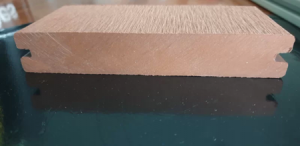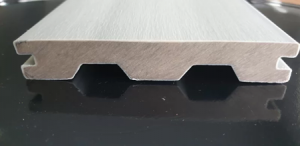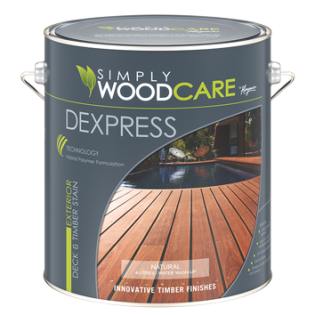New Product to rejuvenate Composite Decking and screening
Aqualis Coatings
As many of you would be aware composite timber has been highly marketed as a product that will require little if any maintenance. However, many customers are finding over the years that a number of these products are not holding up well to the harsh Australian climatic conditions.
Up until recently there has been nothing on the market that could bring life back to a worn or faded composite deck or screen. That is until now…… Introducing Composite Deck from Aqualis.
Aqualis is an Australian company that makes a range of decking applications for all types of timber and composite materials. A number of our customers have been using the Aqualis H2O Oil for years now in traditional timber environments with excellent results and easy application. So, if anyone asks you if there is anything that you can do to rejuvenate my composite deck then you now have a unique opportunity to fulfil this request. If you would like to learn more about this product or any of their decking coatings, please read more below or either contact Stuart or Frank regarding any technical advice.
Composite Wood (WPC) Surfaces Guide
Composite Wood is the product of combining wood fibre, plastic (polyethylene, PVC) and filler material, in some cases with some type of binding agent and in others without added binder. The resulting ‘Wood–plastic Composite’ looks like wood, works like wood, but is generally denser, stronger, and heavier than natural wood.
Composites also generally have the added benefit of being less likely to split, delaminate or be attacked by termites. Composite Wood can be engineered to be lighter weight for easier handling and fire rated. Developments in composite wood technology are making the use of composites more and more versatile meeting the demands of an ever-expanding market, from light weight composites, fire rated composites, to shaping composites on site delivering intricate shapes and patterns etc.
Note however, despite the common theme behind the make-up of composite wood, there is a vast difference in the formulation and methods of manufacture. Plastic type used can vary greatly but is typically PVC, polyethylene, or polypropylene. Wood pulp used can also vary from hard wood, soft woods, bamboo, or a mixture of varieties. The source of plastic and wood pulp used may be from either partially or wholly recycled material or from virgin stock. Binder polymers and pigments used may vary between different suppliers and all intellectual property is a closely guarded secret. Ratios of ingredients vary between manufacturers depending on local requirements, yet these composites can be sold all over the world. Therefore, no two composites behave the same and the process of ageing and their exposure to weather may vary greatly, also depending on where the composite was sourced, this variation may occur batch to batch from the same supplier with no fore warning.
Composite Types:
Two main types of composite available to the Australian consumer are WPC Composite (Wood Plastic Composite) and Capped Composite (Capped Stock Composite). So, what’s the difference between the two?
Wood Plastic Composite (WPC)
Generally, WPC Composite is suitable for repairs using Aqualis Composite Care products
Combining up to 90% recycled wood fibre, plastic (Traditionally PVC) and filler material, in some cases with some type of binding agent in the presence of heat. A cross section picture shows a solid uniform structure throughout. These composites generally can be treated and repaired like timber.

Capped Stock Composite
Generally, Capped stock is not suitable for repairs because coatings do not adhere very well to the encapsulating polymer type used.
Capped Composite is also made from up to 90% recycled materials in the presence of heat. Its structure comprises of a composite inner core (mostly wood pulp and plastic) which is co-extruded with an outer polymer capped shell. The ‘Capped Stock’ outer core polymer used can very between brands predominantly polypropylene and high-density polyethylene (HDPE).
Performance characteristics is dependent on the polymer type of the outer shell. Generally Capped Composite is touted to having better wear properties, improved UV resistance, stain resistant and structurally more stable than conventional WPC Composites.

Maintenance or No Maintenance?
With all good intentions, advertising campaigns were geared towards composite wood not requiring sanding or painting, being more stain, scratch, and mould resistant, exhibiting longer life and requiring less maintenance than natural wood, but in practice this is not so.
Raw materials used to make composite wood do succumb to effects of the harsh Australian climate. Defects in composites can vary depending on their source, from product break down or dissolution in high wet areas, bleaching or turning white when exposed to direct sunlight, excessive colour fading, warping, mould and fungal attack, excessive expansion and contraction, excessive heat absorption becoming too hot to walk on, rotting of structural timber between the composite wood and structural timber interface, high degree of slippage especially when wet, prone to staining and so on.
Composite Wood does not deteriorate like natural timber, it does not become grey but often fades to a washed-out shade from its original colour giving a plastic-like or synthetic appearance. The rate of deterioration will be subject to composition, geographical location, level of exposure to weather elements such as sun wind and rain, level and frequency of foot traffic, degree of wear and tear due to abrasive materials such as sand and sea salt, time allowed for dirt and grime to lock in and concentrate microbial degradation and poor construction methods for example poor ventilation and so on.
New composite materials are constantly hitting the market with the same degree of high-performance expectations, but ultimately the common reality is that nothing truly is ‘maintenance free’, all flooring/cladding especially external surfaces need periodic cleaning and maintenance for longevity.
Solution
Culminating from a combination of 10 years field work, research and development Aqualis Coatings has developed a range of products specifically designed for the composite care market. At present when it comes to coating, the only type of composites which can be treated to some degree like timber are the WPC Composites.
Despite the vast range of suppliers and formulations of WPC composites in the market, most can be coated and restored to new using Aqualis Composite Care products. It must be stressed that due to variations in composite formulae and a multitude of possible defects a test piece be coated before any full-scale repairs be undertaken.
The Aqualis Composite Care system is a multi-step coating process designed to safely strip old coatings using Aqualis ‘Strip Ease’, clean using Aqualis ‘Composite Bright’, treat mould and algal growth with Aqualis ‘No Fungal Pro”, replenish lost colour using Aqualis ‘Refresh’, seal the surface from stains and water ingress using Aqualis ‘Composite Sealer’ and provide anti-slip where required using Aqualis ‘Traction’.
If you would like any technical advice and warranty advice or just to learn more about this product or any of the Aqualis decking coatings please contact Stuart or Frank.
Click here to see how to maintain & restore a composite deck
Click here to shop the range.



